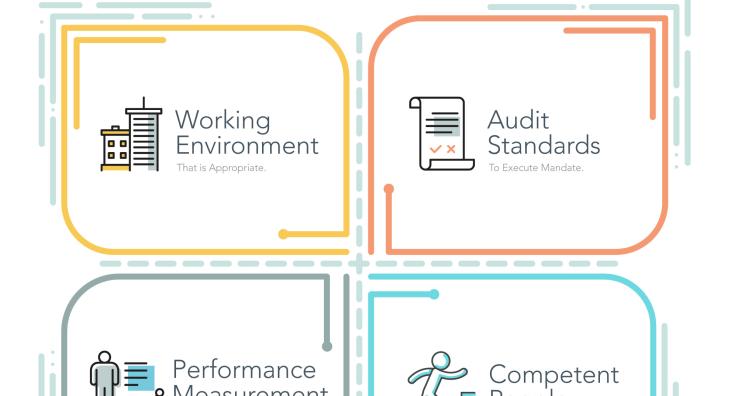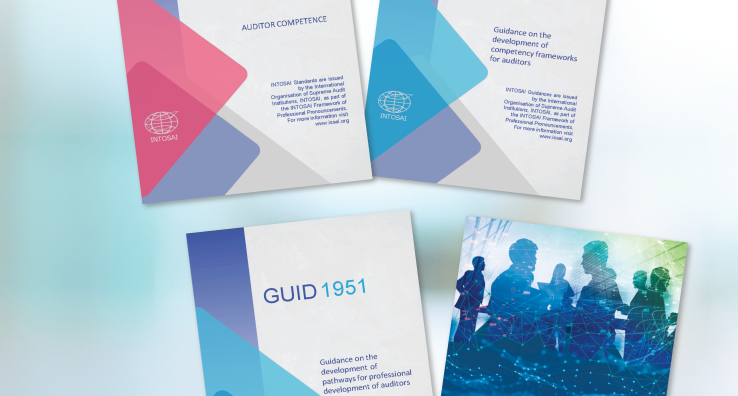Available Languages:
- English
- | Spanish
Este artículo fue traducido por INCP, Instituto Nacional de Contadores Públicos de Colombia.
Much like the public interest is fundamental to the global accountancy profession, making a difference to the lives of citizens is a key driver in public sector auditing. When the heads of supreme audit institutions across the globe reflect on the impact of their audit work, the question whether the work of their institutions touches the lived realities of citizens is often top of mind.
This notion is so central to the field of public sector auditing that the International Organisation of Supreme Audit Institutions (INTOSAI) published a specific auditing pronouncement on it: INTOSAI-P 12 The value and benefits of supreme audit institutions – making a difference to the lives of citizens. This very quickly became a blueprint for INTOSAI as it strives to build capacity and enhance professionalism of supreme audit institutions (SAIs) and their auditors.
Image

Taking these ideas even further, the INTOSAI Capacity Building Committee (CBC), led by the SAIs in South Africa and Sweden— the Auditor-General South Africa and the Swedish National Audit Office—established a four fundamentals of professionalism concept loosely based on INTOSAI-P 12.
These four fundamentals address the value created when a SAI deploys competent audit professionals using credible and relevant auditing standards in an ideal, independent, and well-governed working environment while understanding the necessity of testing this value creation through objective performance management / assessment.
In 2016, the INTOSAI CBC committed to research and development work to ensure that this concept is well-founded at global, regional, SAI and individual level in INTOSAI.
First, a competency framework was developed to define the essence of the public sector auditing function—covering the three main streams of financial, compliance and performance auditing—while over time also reflecting on jurisdictional responsibilities that may be applicable in certain SAIs. This work expanded to also lay out pathways for professional development in the INTOSAI community. This evolved to a point where the next logical step was reworking this body of knowledge into professional pronouncements to be included in the INTOSAI Framework of Professional Pronouncements (standards and guidance).
Image

The process culminated in four INTOSAI CBC pronouncements:
- ISSAI 150, dealing with SAI responsibilities in ensuring the competence of its auditors
- GUID 1950, providing guidance on the development of competency frameworks that reflect the uniqueness of every SAI
- GUID 1951, providing guidance on the development of pathways for professional development
- A guide on competency-based human resource management practices
ISSAI 150 outlines four organisational requirements:
- A SAI shall determine and document relevant competencies required for all auditors to fulfil the SAI mandate (backed up by application material in the pronouncement and detailed guidance in GUID 1950);
- A SAI shall have appropriate human resource management processes and practices to ensure that its auditors have the relevant competencies determined by the SAI (backed by application material in the pronouncement and the competency-based human resource management guide);
- A SAI shall establish dedicated pathways for professional development of auditors, specifically tailored to the SAI’s mandate, regulatory framework, organisation structure and needs (backed by application material in the pronouncement and detailed guidance in GUID 1951); and
- A SAI shall develop and implement the means for assessment of competencies and following up of auditor development progression or self-development on a periodic basis (backed up by application material in the pronouncement and detailed guidance in GUID 1950).
Once every three years, leaders from SAIs around the world gather at the INTOSAI congress. In November 2022, this congress will take place in Rio, Brazil, where this compendium of work on auditor competence will be adopted for use in INTOSAI.
One of the pathways considered in GUID 1951 is for a SAI to partner with a professional accountancy organization (PAO). PAOs are encouraged to engage with their local SAI on how they might support in the implementation of these new pronouncements.
If you are auditing in the public sector, have you considered the value of INTOSAI’s new pronouncements to ensure that you remain a relevant player able to make a difference to the lives of citizens through your work?
The new pronouncements can be accessed on www.issai.org.
Developing these materials also informed a new pilot certification program offered by the INTOSAI Development Initiative.

